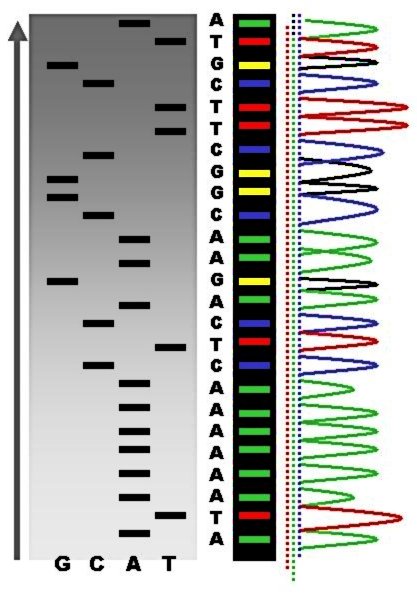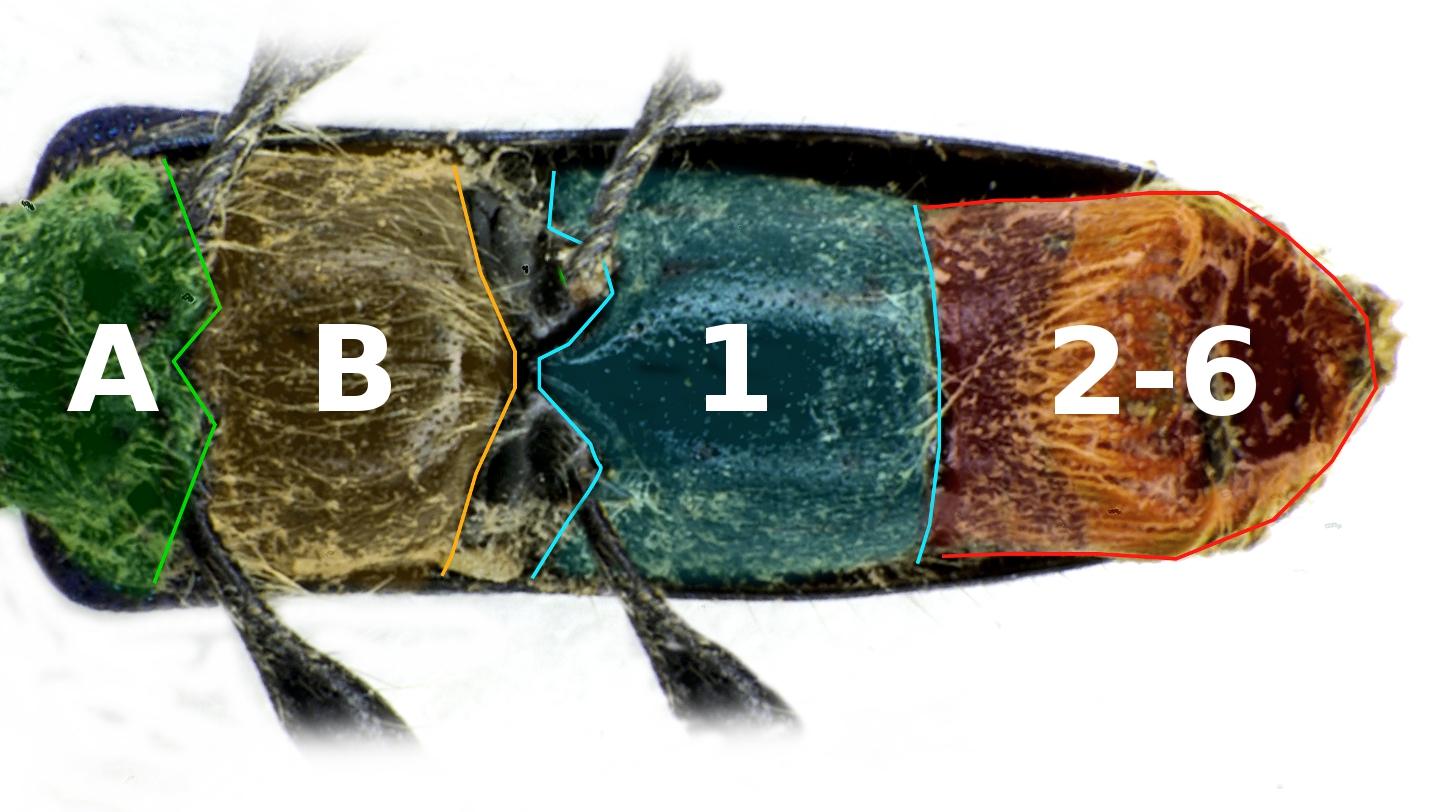|
Galearctus Avulsus
''Galearctus avulsus'' is a species of slipper lobster that lives around New Caledonia. It was described in 2011, having previously been included in '' Galearctus kitanovirosus''. It differs from the other species of the genus ''Galearctus'' most noticeably in the shape of a groove on the sternum. Description ''Galearctus avulsus'' is a small slipper lobster, with a carapace around long, including the rostrum. It differs from the other species in the genus ''Galearctus'' by the shape of the groove on the midline of the sternum between the first pair of pereiopods. In the other species, this groove is narrow, but in ''G. avulsus'', it widens and appears as if "torn away". Distribution and conservation ''Galearctus avulsus'' lives in the waters around New Caledonia and the Chesterfield Islands, at depths of . It may also occur around Fiji. Although ''G. avulsus'' is very poorly known, it has a large range and no apparent threats, and is therefore listed as being of ''Least Conce ... [...More Info...] [...Related Items...] OR: [Wikipedia] [Google] [Baidu] |
Slipper Lobster
Slipper lobsters are a family (Scyllaridae) of about 90 species of achelate crustaceans, in the Decapoda clade Reptantia, found in all warm oceans and seas. They are not true lobsters, but are more closely related to spiny lobsters and furry lobsters. Slipper lobsters are instantly recognisable by their enlarged antennae, which project forward from the head as wide plates. All the species of slipper lobsters are edible, and some, such as the Moreton Bay bug and the Balmain bug ('' Ibacus peronii'') are of commercial importance. Description Slipper lobsters have six segments in their heads and eight segments in the thorax, which are collectively covered in a thick carapace. The six segments of the abdomen each bear a pair of pleopods, while the thoracic appendages are either walking legs or maxillipeds. The head segments bear various mouthparts and two pairs of antennae. The first antennae, or ''antennules'', are held on a long flexible stalk, and are used for sensing the ... [...More Info...] [...Related Items...] OR: [Wikipedia] [Google] [Baidu] |
Korea
Korea ( ko, 한국, or , ) is a peninsular region in East Asia. Since 1945, it has been divided at or near the 38th parallel, with North Korea (Democratic People's Republic of Korea) comprising its northern half and South Korea (Republic of Korea) comprising its southern half. Korea consists of the Korean Peninsula, Jeju Island, and several minor islands near the peninsula. The peninsula is bordered by China to the northwest and Russia to the northeast. It is separated from Japan to the east by the Korea Strait and the Sea of Japan (East Sea). During the first half of the 1st millennium, Korea was divided between three states, Goguryeo, Baekje, and Silla, together known as the Three Kingdoms of Korea. In the second half of the 1st millennium, Silla defeated and conquered Baekje and Goguryeo, leading to the " Unified Silla" period. Meanwhile, Balhae formed in the north, superseding former Goguryeo. Unified Silla eventually collapsed into three separate states due ... [...More Info...] [...Related Items...] OR: [Wikipedia] [Google] [Baidu] |
Achelata
The Achelata is an infra-order of the decapod crustaceans, holding the spiny lobsters, slipper lobsters and their fossil relatives. Description The name "Achelata" derives from the fact that all the members of this group lack the chelae (claws) that are found on almost all other decapods (from the Ancient Greek , = "not", , = "claw"). They are further united by the great enlargement of the second antennae, by the special " phyllosoma" form of the larva, and by a number of other characters. Classification and fossil record The infraorder Achelata belongs to the group Reptantia, which consists of the walking/crawling decapods (lobsters and crabs). The cladogram below shows Achelata's placement within the larger order Decapoda, from analysis by Wolfe ''et al.'', 2019. Achelata contains the spiny lobsters (Palinuridae), the slipper lobsters (Scyllaridae) and the furry lobsters (Synaxidae, now usually included in Palinuridae), as well as two extinct families, Cancrinidae ... [...More Info...] [...Related Items...] OR: [Wikipedia] [Google] [Baidu] |
Galearctus Rapanus
''Galearctus'' is a genus of slipper lobsters, comprising the following species: *''Galearctus aurora'' (Holthuis, 1982) *''Galearctus avulsus'' Yang, Chen & Chan, 2011 *''Galearctus kitanoviriosus'' (Harada, 1962) *'' Galearctus rapanus'' (Holthuis, 1993) *'' Galearctus timidus'' (Holthuis, 1960) *'' Galearctus umbilicatus'' (Holthuis Lipke Bijdeley Holthuis (21 April 1921 – 7 March 2008) was a Dutch carcinologist, considered one of the "undisputed greats" of carcinology, and "the greatest carcinologist of our time". Holthuis was born in Probolinggo, East Java and obtained ..., 1977) References Achelata Taxa named by Lipke Holthuis {{Decapoda-stub ... [...More Info...] [...Related Items...] OR: [Wikipedia] [Google] [Baidu] |
Cytochrome Oxidase
The enzyme cytochrome c oxidase or Complex IV, (was , now reclassified as a translocasEC 7.1.1.9 is a large transmembrane protein complex found in bacteria, archaea, and mitochondria of eukaryotes. It is the last enzyme in the respiratory electron transport chain of cells located in the membrane. It receives an electron from each of four cytochrome c molecules and transfers them to one oxygen molecule and four protons, producing two molecules of water. In addition to binding the four protons from the inner aqueous phase, it transports another four protons across the membrane, increasing the transmembrane difference of proton electrochemical potential, which the ATP synthase then uses to synthesize ATP. Structure The complex The complex is a large integral membrane protein composed of several metal prosthetic sites and 14 protein subunits in mammals. In mammals, eleven subunits are nuclear in origin, and three are synthesized in the mitochondria. The complex contains ... [...More Info...] [...Related Items...] OR: [Wikipedia] [Google] [Baidu] |
DNA Sequencing
DNA sequencing is the process of determining the nucleic acid sequence – the order of nucleotides in DNA. It includes any method or technology that is used to determine the order of the four bases: adenine, guanine, cytosine, and thymine. The advent of rapid DNA sequencing methods has greatly accelerated biological and medical research and discovery. Knowledge of DNA sequences has become indispensable for basic biological research, DNA Genographic Projects and in numerous applied fields such as medical diagnosis, biotechnology, forensic biology, virology and biological systematics. Comparing healthy and mutated DNA sequences can diagnose different diseases including various cancers, characterize antibody repertoire, and can be used to guide patient treatment. Having a quick way to sequence DNA allows for faster and more individualized medical care to be administered, and for more organisms to be identified and cataloged. The rapid speed of sequencing attained with m ... [...More Info...] [...Related Items...] OR: [Wikipedia] [Google] [Baidu] |
Sternite
The sternum (pl. "sterna") is the ventral portion of a segment of an arthropod thorax or abdomen. In insects, the sterna are usually single, large sclerites, and external. However, they can sometimes be divided in two or more, in which case the subunits are called sternites, and may also be modified on the terminal abdominal segments so as to form part of the functional genitalia, in which case they are frequently reduced in size and development, and may become internalized and/or membranous. For a detailed explanation of the terminology, see Kinorhynchs have tergal and sternal plates too, though seemingly not homologous with those of arthropods.Sørensen, M. V. et al. Phylogeny of Kinorhyncha based on morphology and two molecular loci. PLoS One 10, 1–33 (2015). Ventrites are externally visible sternites. Usually the first sternite is covered up, so that vertrite numbers do not correspond to sternid numbers. The term is also used in other arthropod groups such as crustacea ... [...More Info...] [...Related Items...] OR: [Wikipedia] [Google] [Baidu] |
Specific Name (zoology)
In zoological nomenclature, the specific name (also specific epithet or species epithet) is the second part (the second name) within the scientific name of a species (a binomen). The first part of the name of a species is the name of the genus or the generic name. The rules and regulations governing the giving of a new species name are explained in the article species description. For example, the scientific name for humans is ''Homo sapiens'', which is the species name, consisting of two names: ''Homo'' is the " generic name" (the name of the genus) and ''sapiens'' is the "specific name". Historically, ''specific name'' referred to the combination of what are now called the generic and specific names. Carl Linnaeus, who formalized binomial nomenclature, made explicit distinctions between specific, generic, and trivial names. The generic name was that of the genus, the first in the binomial, the trivial name was the second name in the binomial, and the specific the proper term fo ... [...More Info...] [...Related Items...] OR: [Wikipedia] [Google] [Baidu] |
Type (biology)
In biology, a type is a particular wiktionary:en:specimen, specimen (or in some cases a group of specimens) of an organism to which the scientific name of that organism is formally attached. In other words, a type is an example that serves to anchor or centralizes the defining features of that particular taxon. In older usage (pre-1900 in botany), a type was a taxon rather than a specimen. A taxon is a scientifically named grouping of organisms with other like organisms, a set (mathematics), set that includes some organisms and excludes others, based on a detailed published description (for example a species description) and on the provision of type material, which is usually available to scientists for examination in a major museum research collection, or similar institution. Type specimen According to a precise set of rules laid down in the International Code of Zoological Nomenclature (ICZN) and the International Code of Nomenclature for algae, fungi, and plants (ICN), the ... [...More Info...] [...Related Items...] OR: [Wikipedia] [Google] [Baidu] |
National Taiwan Ocean University
National Taiwan Ocean University (NTOU; ) is a national university in Zhongzheng District, Keelung, Taiwan. NTOU is a member of University System of Taipei. History NTOU was originally established as the Provincial Taiwan Maritime Technology College in 1953. In 1979, it was renamed National Taiwan College of Marine Science and Technology. Ten years later, the institution underwent another name change, to National Taiwan Ocean University. A satellite opened on Beigan, Lienchiang in July 2019 as the first university campus on the Matsu Islands. Colleges, Departments, and Institutes *College of Maritime Science and Management **Department of Merchant Marine **Department of Shipping and Transportation Management **Department of Transportation Science **Department of Marine Engineering **Bachelor Degree Program in Ocean Business Management *College of Life Sciences **Department of Food Science **Department of Aquaculture **Department of Bioscience and Biotechnology **Institute of M ... [...More Info...] [...Related Items...] OR: [Wikipedia] [Google] [Baidu] |
Indo-Pacific
The Indo-Pacific is a vast biogeographic region of Earth. In a narrow sense, sometimes known as the Indo-West Pacific or Indo-Pacific Asia, it comprises the tropical waters of the Indian Ocean, the western and central Pacific Ocean, and the seas connecting the two in the general area of Indonesia. It does not include the temperate and polar regions of the Indian and Pacific oceans, nor the Tropical Eastern Pacific, along the Pacific coast of the Americas, which is also a distinct marine realm. The term is especially useful in marine biology, ichthyology, and similar fields, since many marine habitats are continuously connected from Madagascar to Japan and Oceania, and a number of species occur over that range, but are not found in the Atlantic Ocean. The region has an exceptionally high species richness, with the world's highest species richness being found in at its heart in the Coral Triangle, and a remarkable gradient of decreasing species richness radiating outwa ... [...More Info...] [...Related Items...] OR: [Wikipedia] [Google] [Baidu] |



.jpg)
